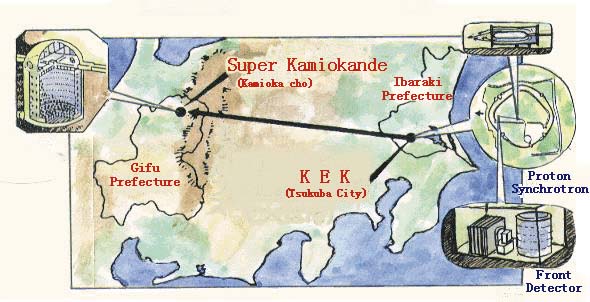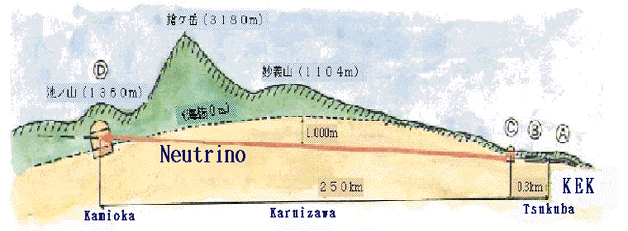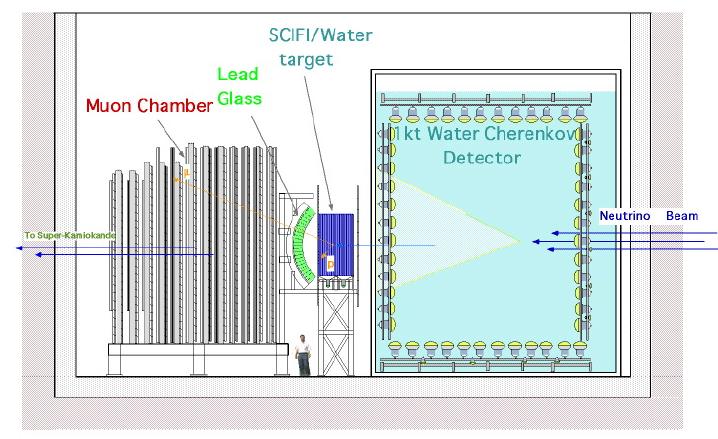| K2K -from KEK to Kamioka- Long Baseline Neutrino Oscillation Experiment |  |
| K2K -from KEK to Kamioka- Long Baseline Neutrino Oscillation Experiment |  |
Neutrino mass is one of the great mysteries of the current understanding
of elementary particle physics. To verify or deny the possibility of neutrino
mass, we are starting a long baseline neutrino oscillation experiment (K2K),
using the 12GeV proton synchrotron accelerator at the High Energy Accelerator
Research Organization (KEK) in Tsukuba city in Ibaraki Prefecture, and
the Super-Kamiokande detector which lies 250km away in Kamioka town in
Gifu Prefecture, operated by Institute of Cosmic Ray Research (ICRR),
University of Tokyo.
At the KEK site, we create a neutrino beam and do a very
precise measurement of the beam flux and the contamination
of wrong species of neutrino, using a set of nearby detectors.
Then we can look for any possible effects due to neutrino oscillations
by comparing the Super-Kamiokande measurement
with the front detector measurement.


The above piece of a map of Japan has some important points about the K2K
experiment in it. Basically, the thick black arrow is the 250 Km path which
the neutrinos will follow from KEK to Super-Kamiokande. The scenic northern
"Japan Alps" under which our beam will travel. The central expanded
section on the right is a caricature of the KEK laboratory grounds, with
further details shown depicting our beam target area and front detector
hall.
At KEK, the intense proton beam from 12GeV proton synchrotron produces
numerous pi-mesons at the production target made of aluminum. These pi-mesons
are focused to decay into muons and neutrinos in the 200-m decay pipe.
The neutrinos emerged from the dump shield pass through the front detector
and travel to Super-Kamiokande within a millisecond.

We have a 1 kiloton water Cherenkov detector (maintained by ICRR) and a
fine grain scintillating fiber detector to measure
the neutrino flux and beam composition at the KEK site. Behind the fine
grain detector, there is an array of lead glass
to measure the beam composition, and then a "Muon
" which is a stack of iron plates and wire chamber detectors
to measure the muon spectrum accurately. This whole suite of detectors
sits in a hole below ground level so that the beam
center can be properly aimed at the far detector. Because of the earth's
curvature the straight line from the target to Super-Kamiokande points
down by about one and a half degrees into the ground.

|
www-admin(a)neutrino.kek.jp
|
Last modified: Thu Jun 13 15:35:28 JST 2002
|
|
|